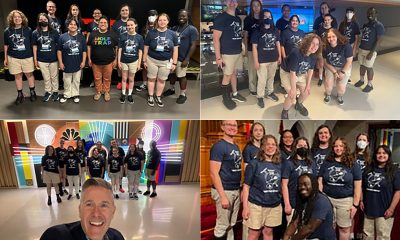Arts & Entertainment
Best of Gay D.C. 2017: MEDIA
Winners from the Washington Blade’s annual poll


(Photo of Jim Vance by Robin Fader; Washington Blade photo of DCist reporters by Tom Hausman; photo of a D.C. Metro stop by Peter French courtesy Flickr)
Best Local Website
DCist
News, food, arts and events.
Editor’s choice: Popville

(Washington Blade photo by Tom Hausman)
Best Local Social Media Channel
Editor’s Choice: @alexmorash
@unsuckdcmetro has been chronicling D.C. Metro’s mishaps and disasters since January, 2009.
The anonymous founder, who says he is a journalist and LGBT ally, started using Metro as part of his commute. After experiencing problems he decided to start a blog to complain. He says he didn’t think the blog would get as popular as it did but noticed he wasn’t the only disgruntled one.
“One thing that got me thinking that it might have a chance to become useful was noticing the faces of fellow passengers when a train offloads or whatever problem it might be. Everyone just looks like, “Geez, this Metro is so bad,’” he says.
What started as a blog to vent frustrations about the daily commute evolved into Facebook and Twitter pages with thousands of followers united by their common annoyance of public transportation.
The founder recalls that one of his biggest posts on his now-defunct blog was on the June 22, 2009 metro crash. It was the first time he noticed the power of social media in the news as tweets poured in tracking the tragedy.
Now besides his own posts, other passengers tag @unsuckmetrodc their issues with Metro from offloading to uncleanliness.
While @unsuckmetro is the founder’s passion project, he says he would much rather the Metro be reliable.
“At the very foundation of the problem is the way it’s governed. Nobody is accountable. It’s set up to protect everyone involved from being accountable. People let things slide when they’re not accountable,” he says. (MC)

(Photo by Peter French; courtesy Flickr)
Best Local TV Personality
Jim Vance
Runner up: Chuck Bell, NBC 4
Many Washingtonians can recall growing up seeing Jim Vance report the news from the screens in their living rooms. The NBC4 news anchor became entrenched in D.C. culture just as much as “the Godfather of Go-Go” Chuck Brown, former D.C. Mayor Marion Barry and radio DJ Russ Parr, who all join Vance on Ben’s Chili Bowl mural wall.
Vance, who died from cancer in July at age 75, worked at NBC4 for more than 40 years making him the District’s longest serving TV anchor. Born in Ardmore, Pa., Vance was a reporter for the Philadelphia Independent newspaper and WHAT-AM radio station while also teaching English. He joined WRC-TV (NBC4) in 1969 as a reporter before moving to the anchor desk in 1972.
His coverage spanned some of the most talked about moments in D.C.’s history.
In 1977, he reported on the Hanafi Siege on three D.C. buildings by 12 gunmen which resulted in 149 hostages and the death of radio host Maurice Williams. He also covered the Air Florida Flight 90 crash in the Potomac River, which killed 78 people, in 1982.
More recently, he called out the Washington Redskins over the controversial use of their name despite being a longtime fan.
“Back in the day, if you really wanted to insult a black man, an Italian, a Jew, an Irishman, and probably start a fight, you threw out certain words. They were, and are pejoratives of the first order, the worst order, specifically intended to injure. In my view, ‘Redskin’ was and is in that same category,” Vance said during a 2013 broadcast of “Vance’s View.”
Over the course of his career, Vance received 19 local Emmy awards. In 2007, he earned the honor of being inducted into the National Association of Black Journalists Hall of Fame.
He gained recognition as a news anchor outside of D.C. thanks to a viral video that reached millions of views. In a 2006 segment on Paris Fashion Week, Vance and sports anchor George Michael couldn’t control their laughter over a model who fell twice on the runway. The Foo Fighters even paid tribute to Vance by using the video in a promo for their concert at RFK stadium.
While his professional life was widely praised, his personal life was also colorful. He went to the Betty Ford Clinic in 1984 to recover from a cocaine addiction that he battled throughout the ‘70s and ‘80s. Barry asked Vance for advice when he was dealing with his own addiction to crack cocaine which led to his 1990 arrest.
“Why did he ask me? Because what he, like everyone else who’s been around Washington for a while knows, is that for more than four years I have been in recovery. The mayor thought that I might be able to advise him. I did so,” the Washington Post quotes Vance telling viewers.
He was also candid about his struggles with depression and a suicide attempt at Potomac River at Great Falls in 1987 for which he sought therapy.
Vance died at his Silver Spring, Md. home. He is survived by his wife Kathy McCampbell Vance and three children Dawn, Amani and Brendon. (MC)

Jim Vance (Photo by Robin Fader)
Best Radio Station
WAMU 88.5
Public radio station serving the D.C. metro area.
Editor’s choice: Hot 99.5


The Gay Men’s Chorus of Washington perform “The Holiday Show” at Lincoln Theatre (1215 U St., N.W.). Visit gmcw.org for tickets and showtimes.
(Washington Blade photos by Michael Key)
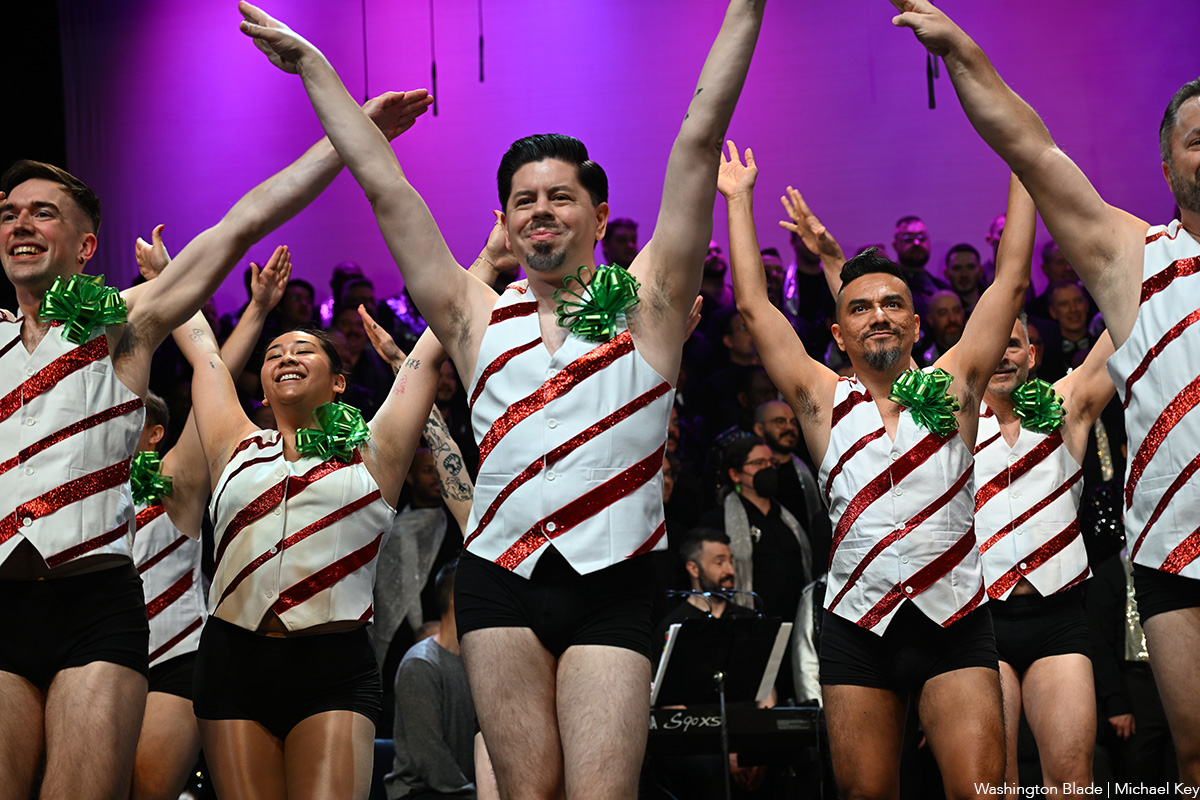


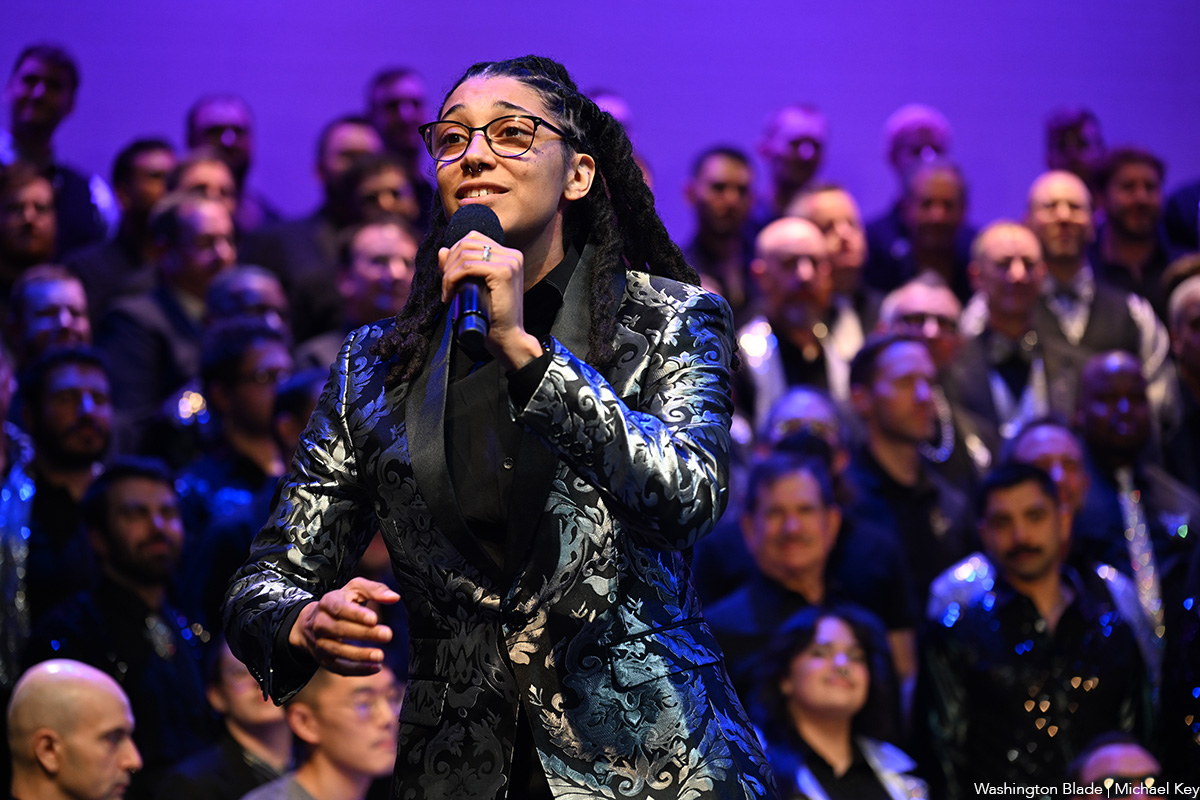
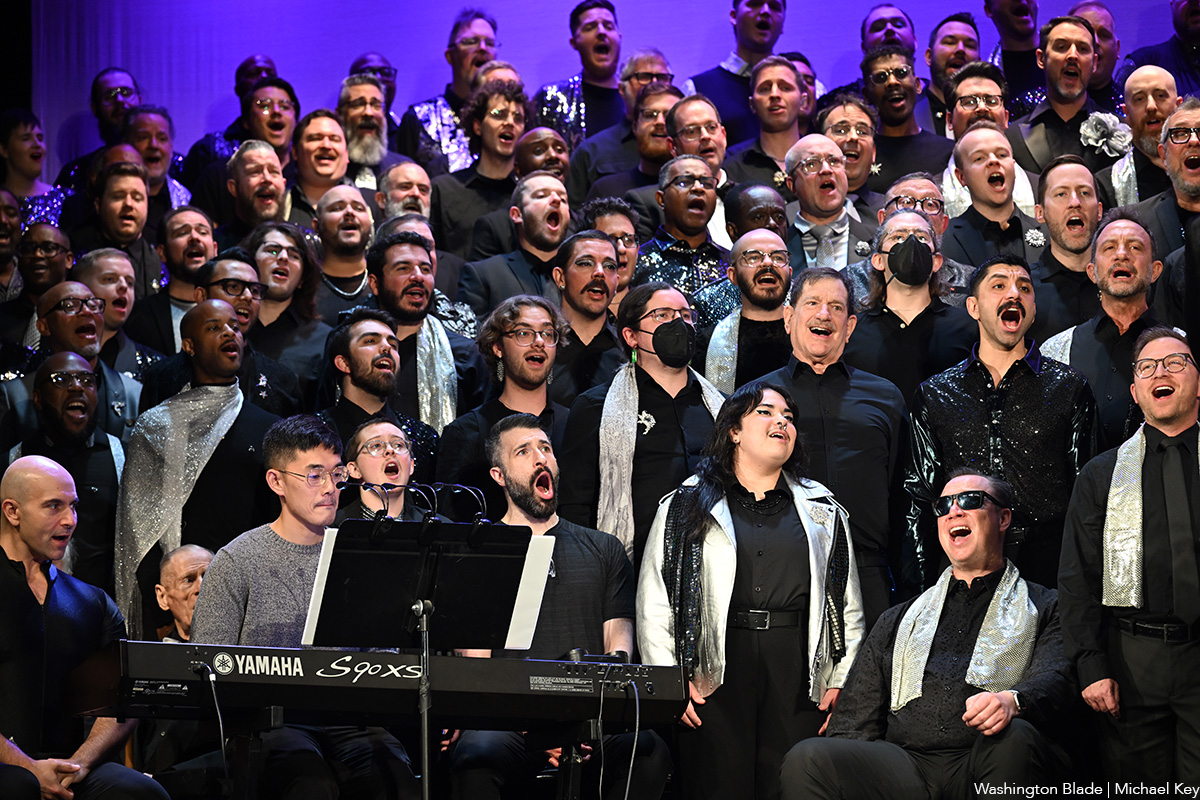






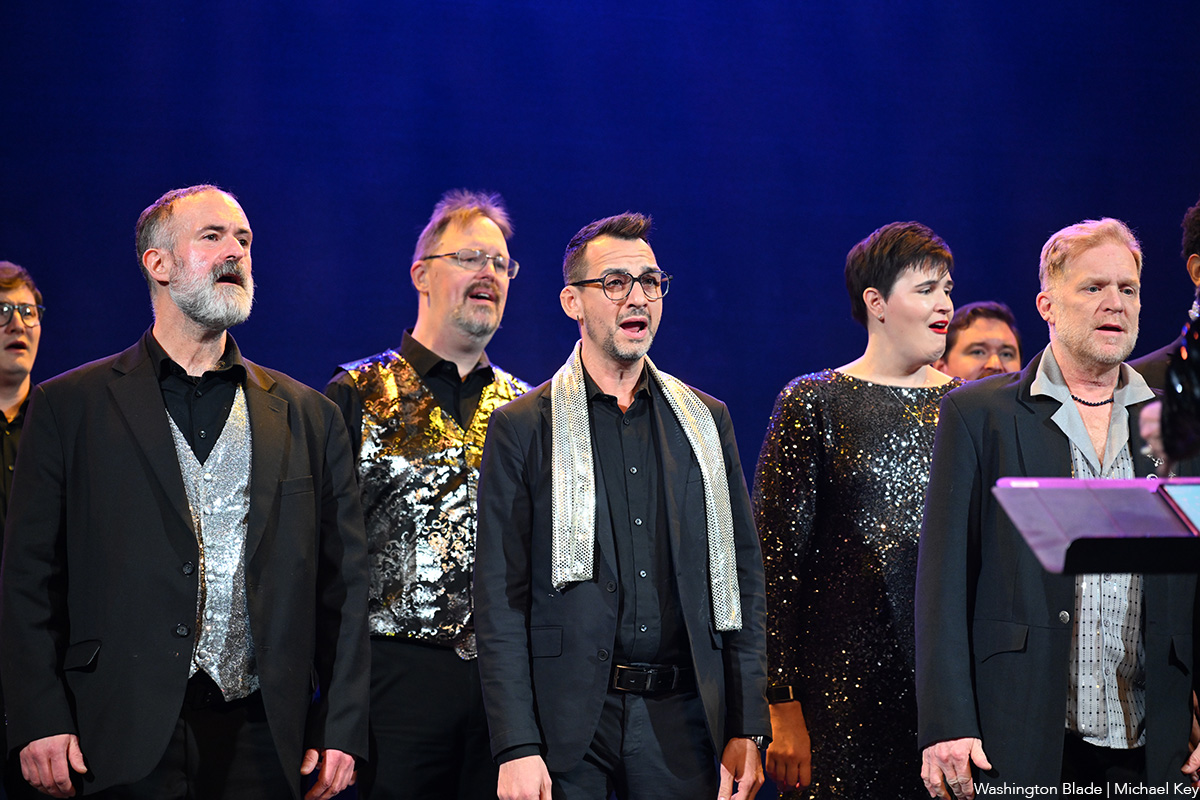
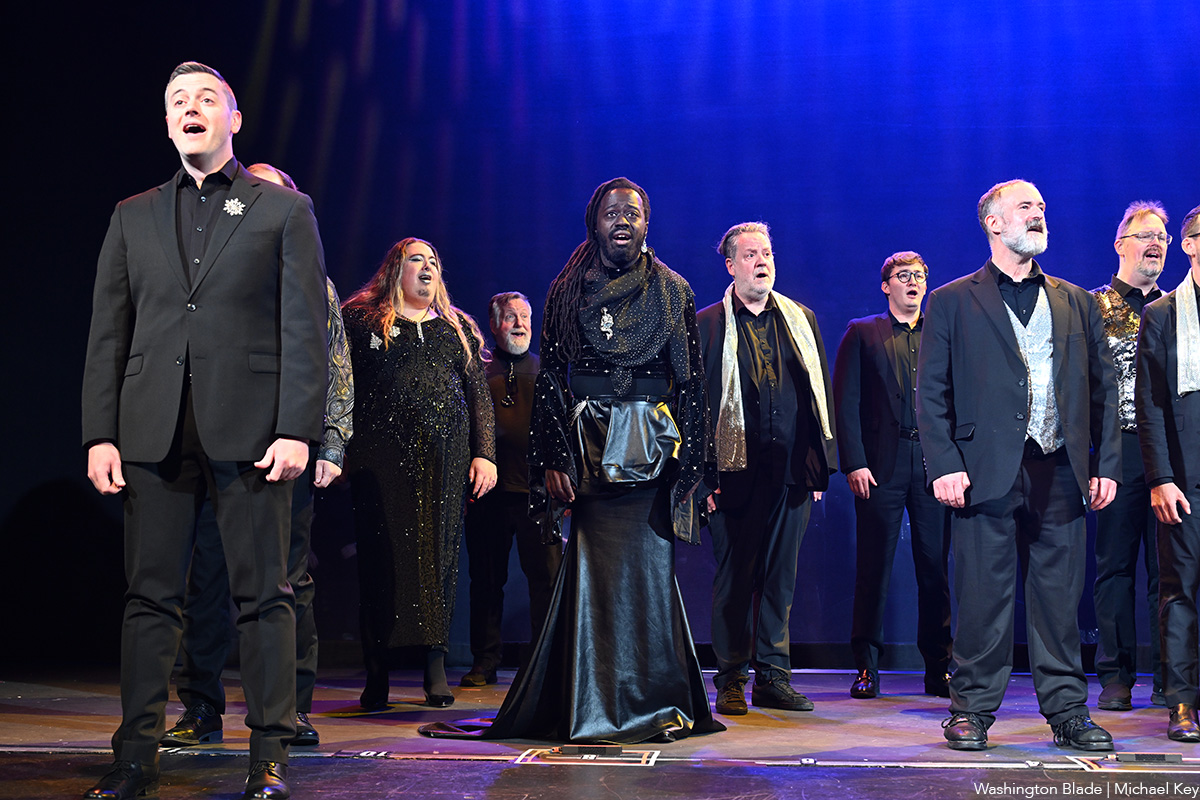
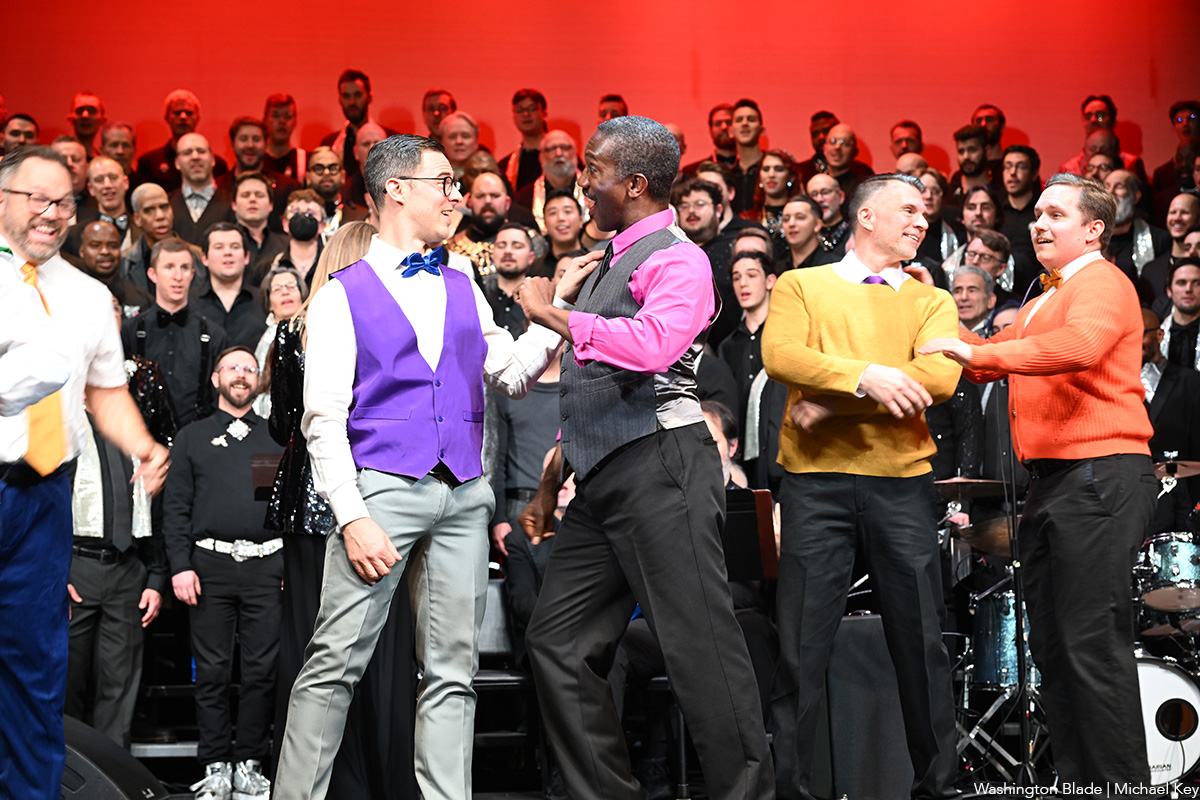
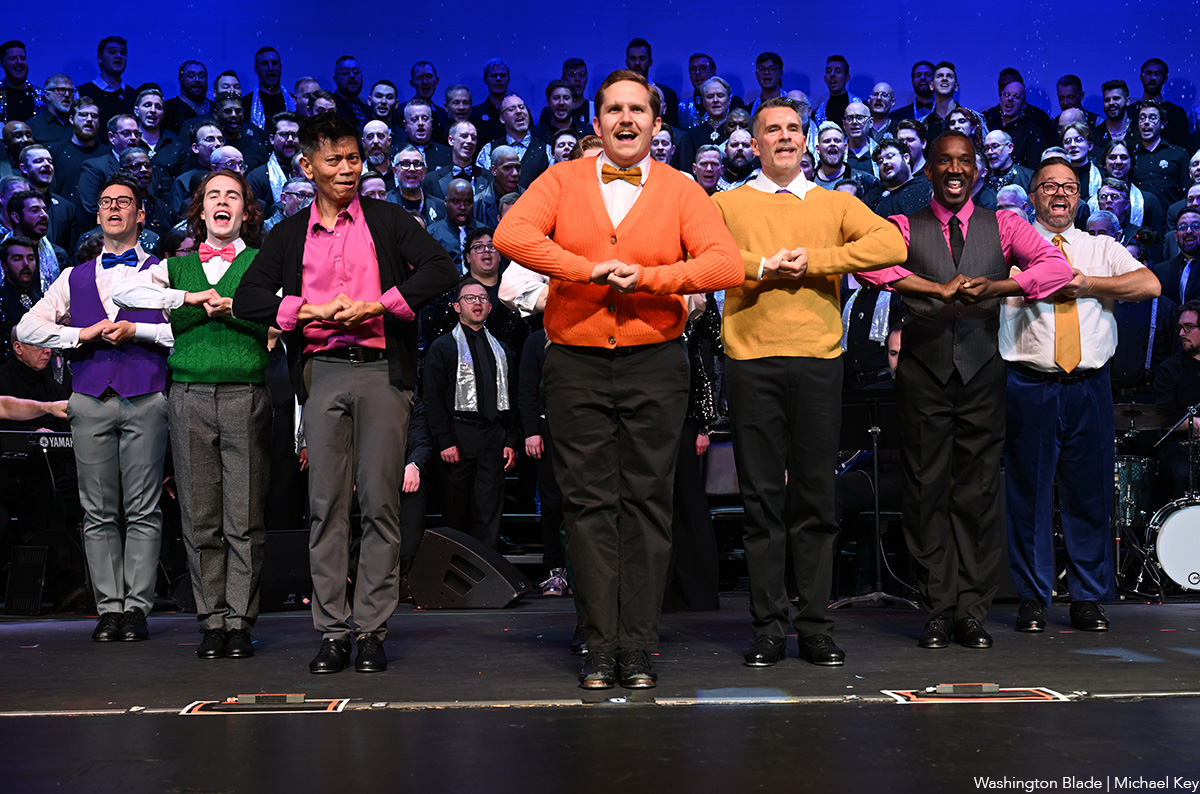

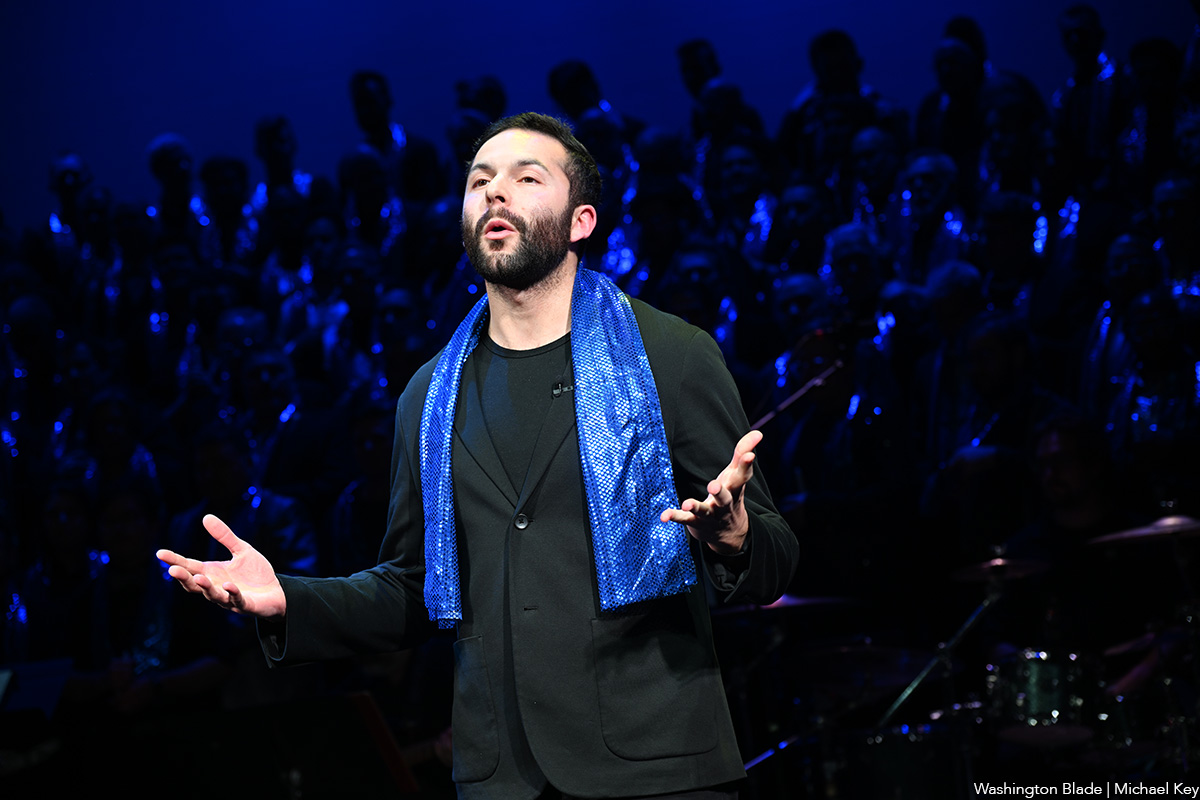
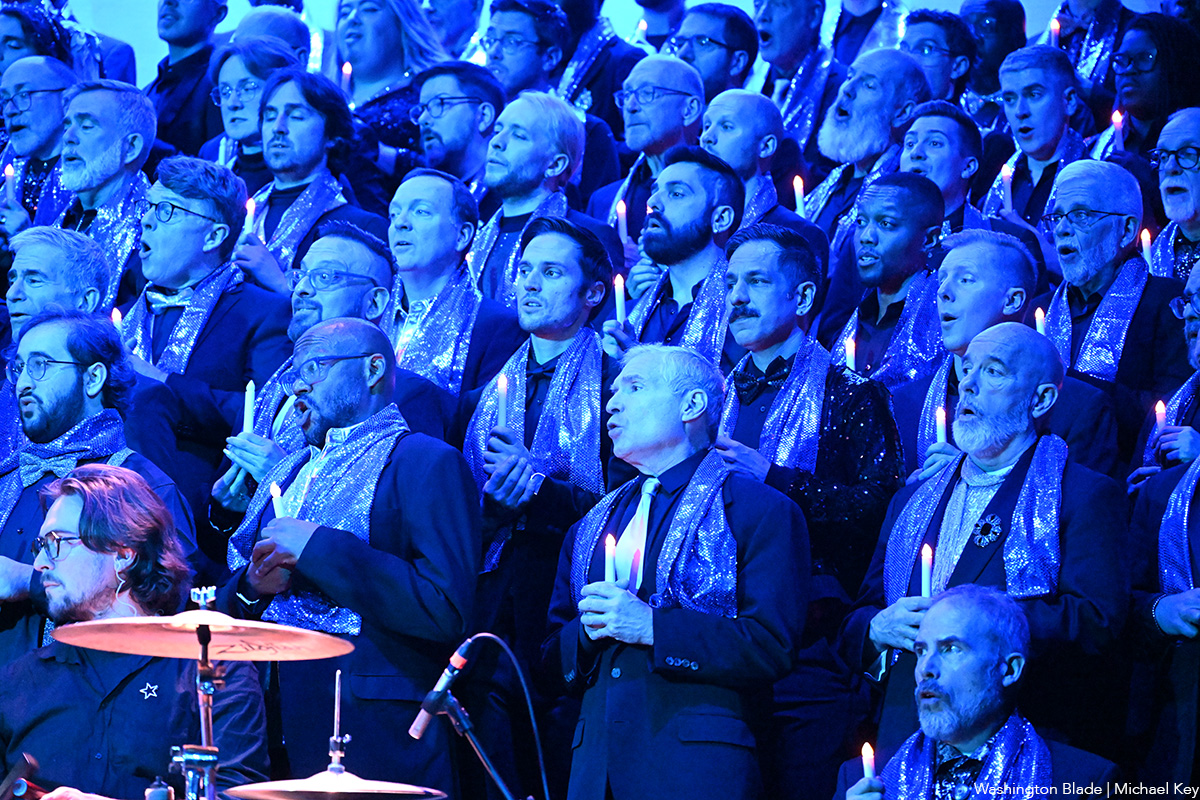
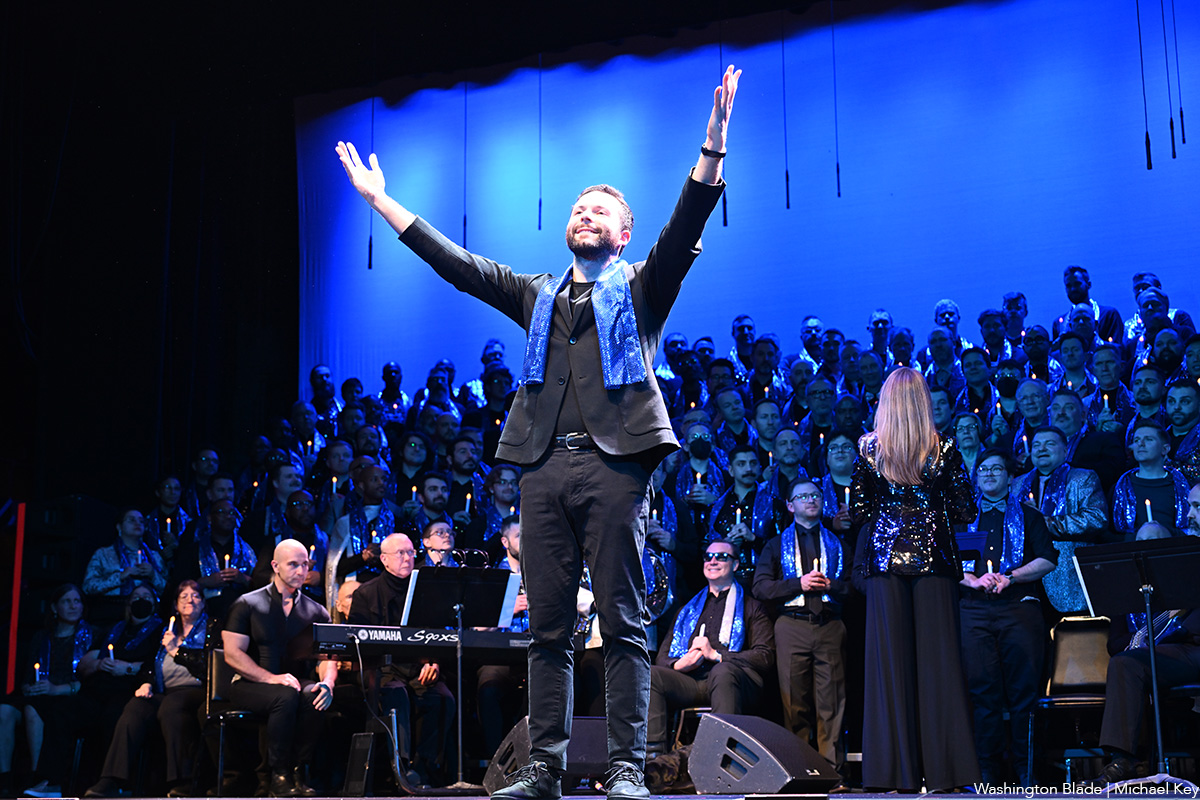


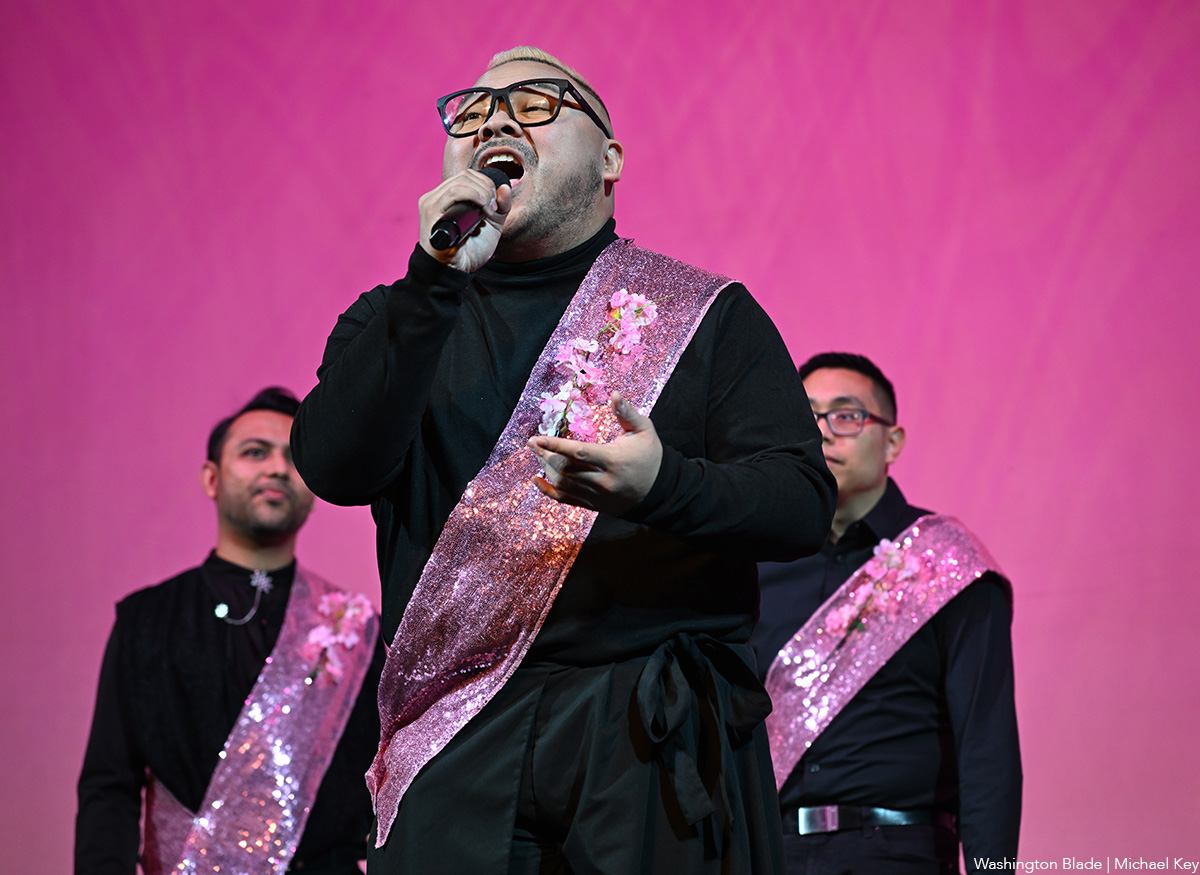

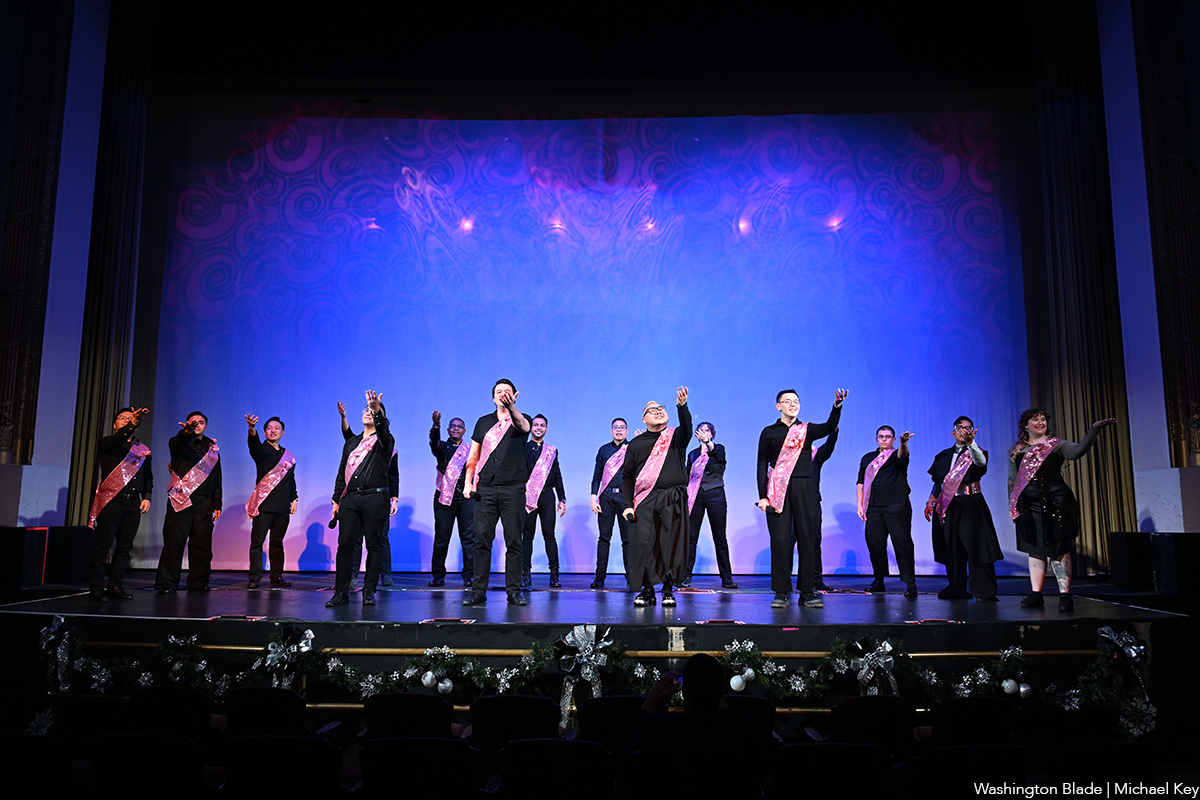
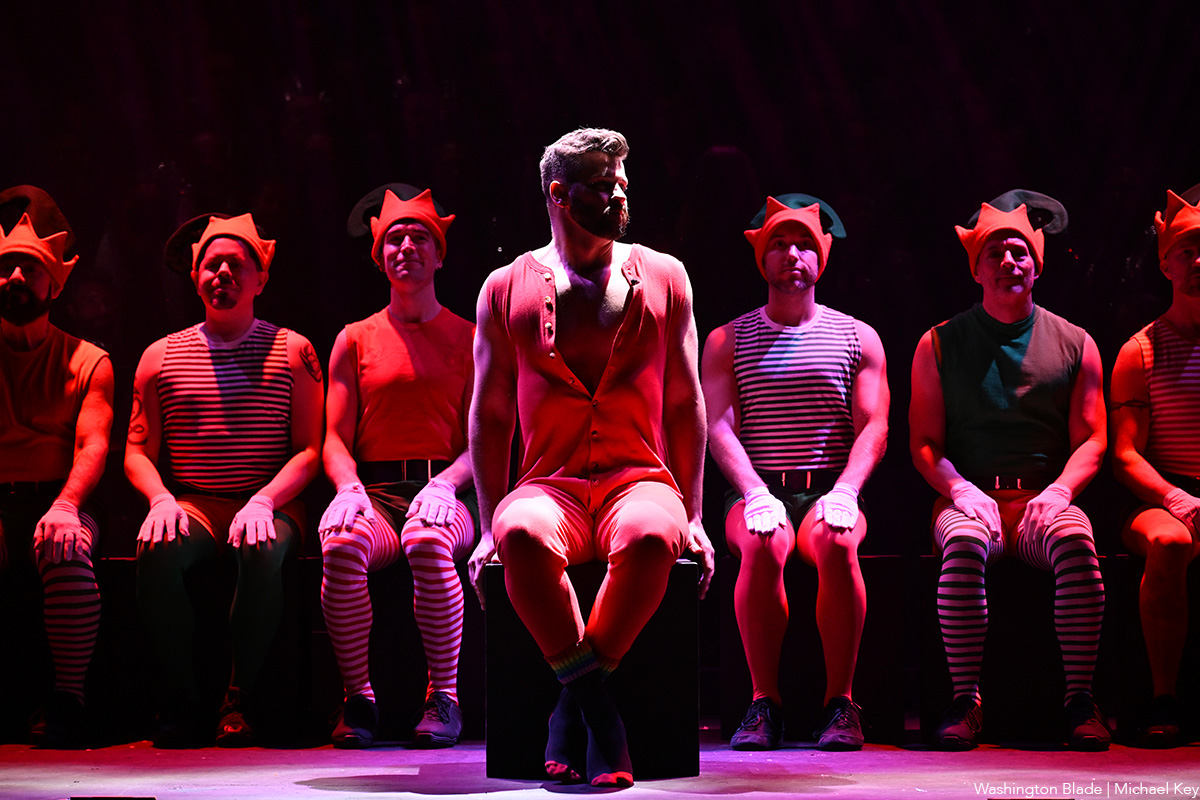

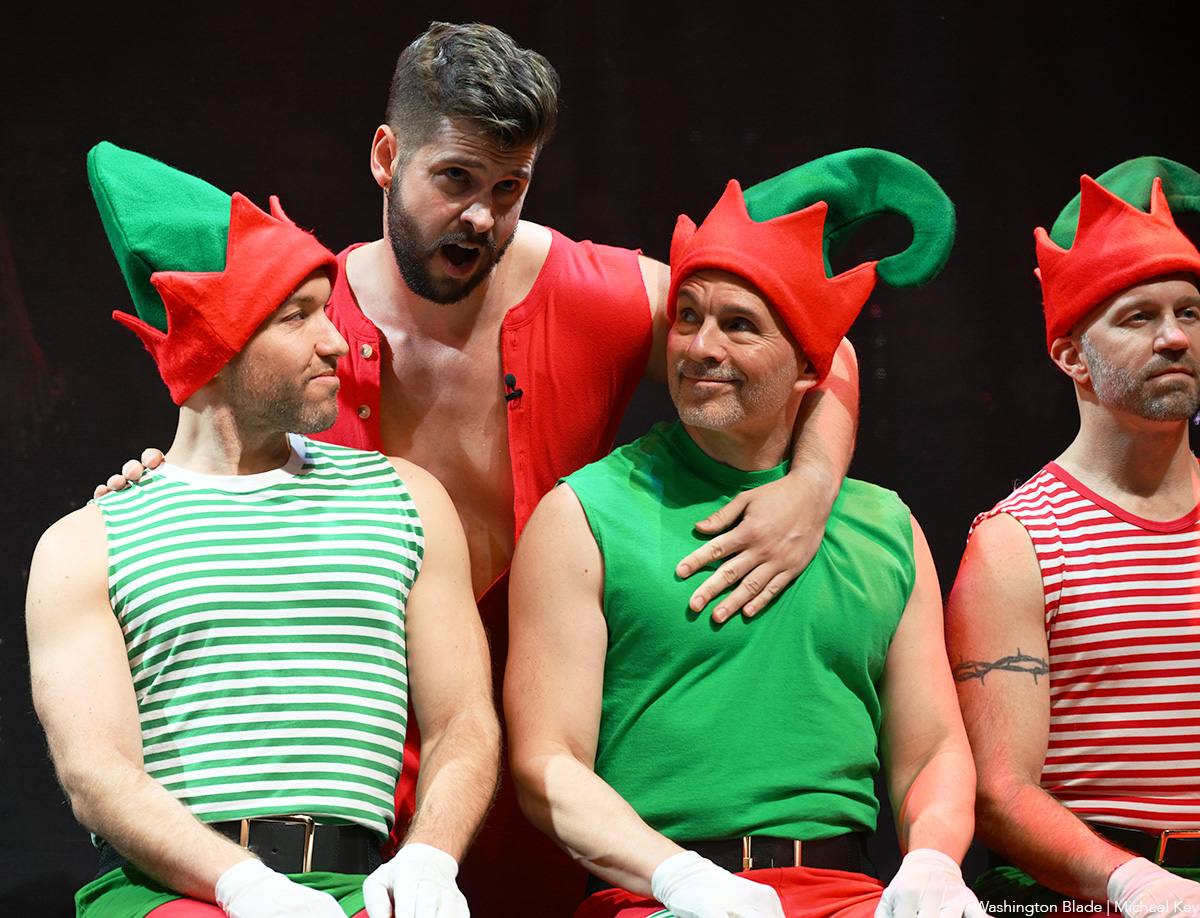

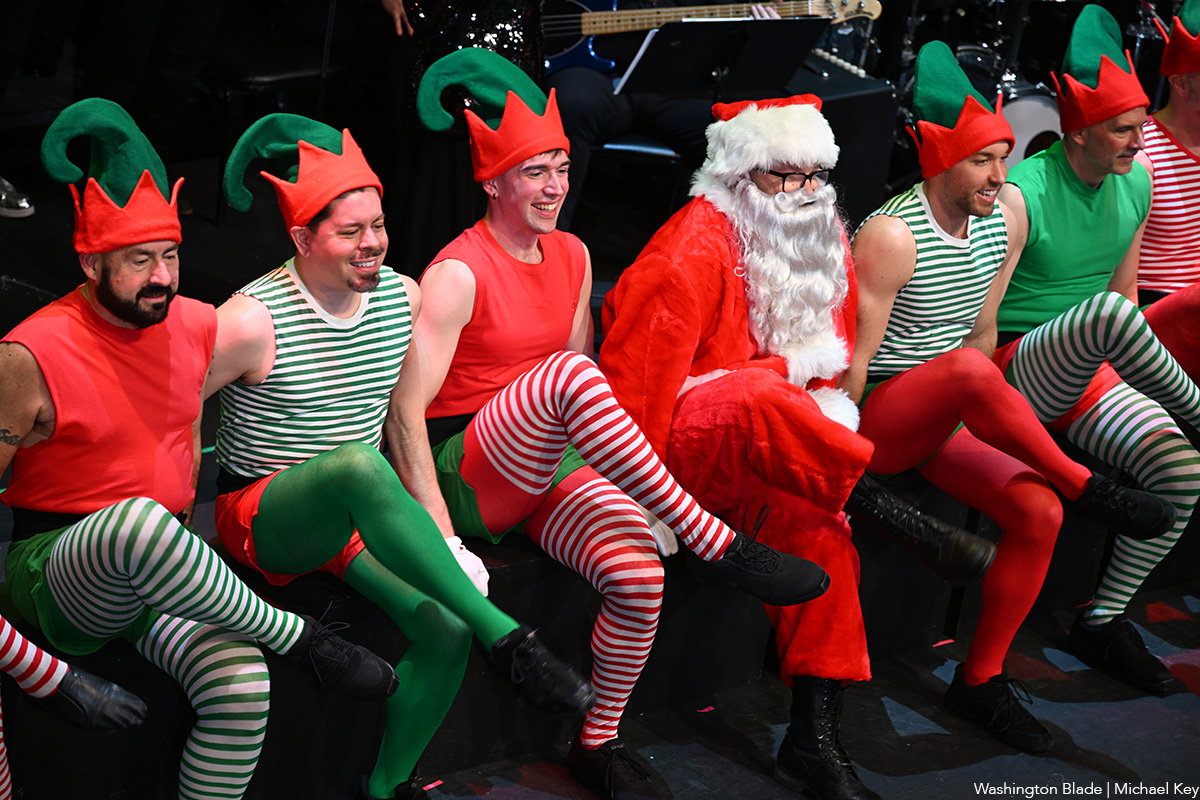
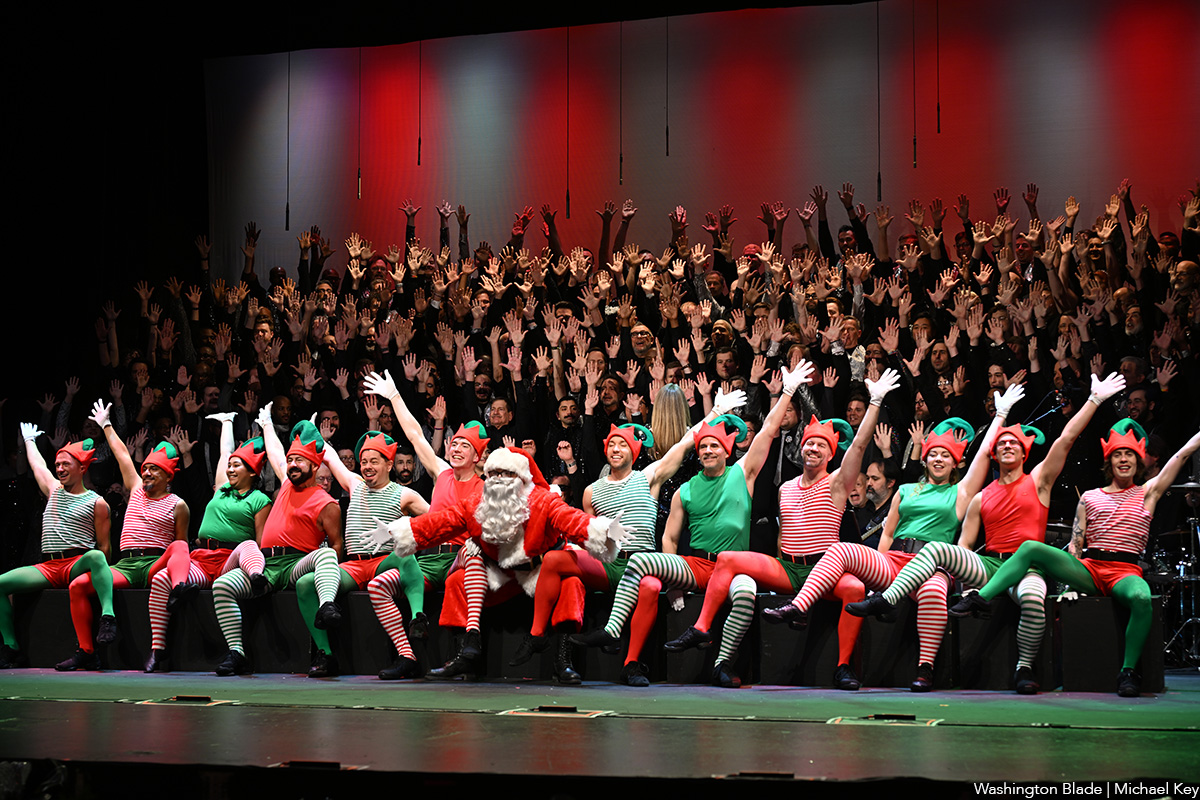

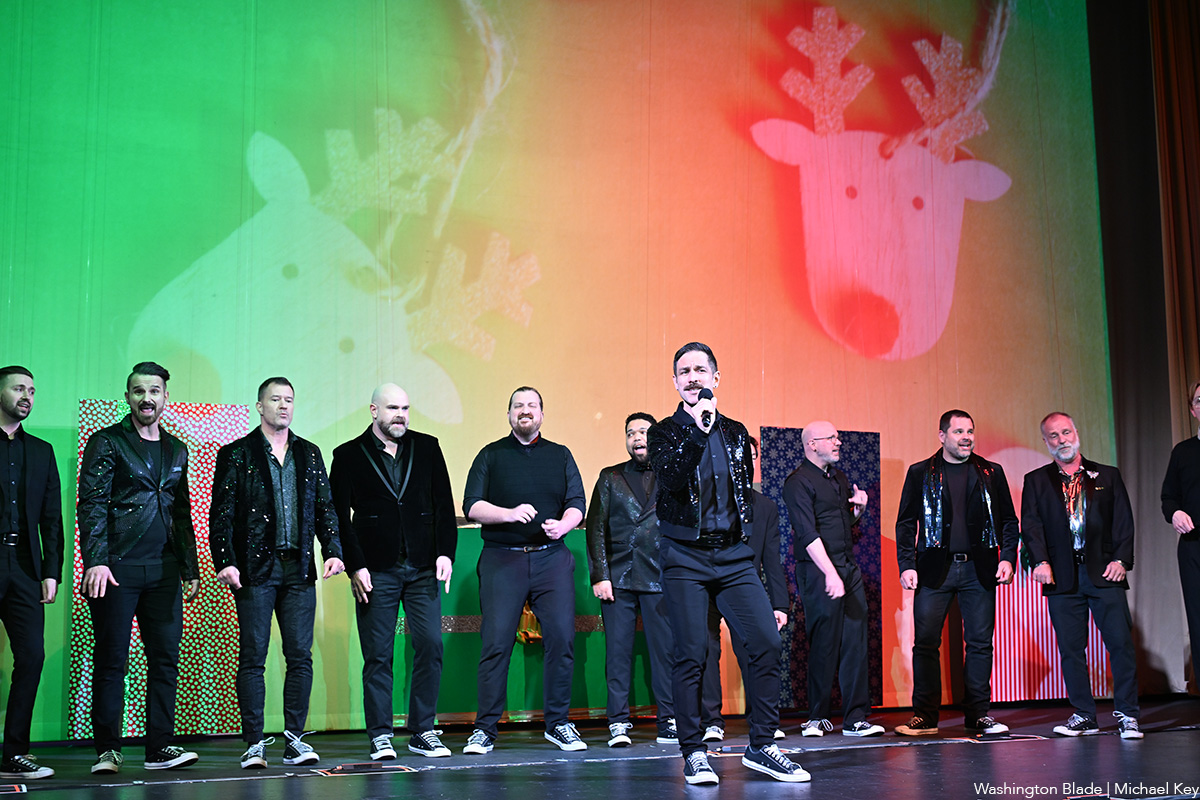
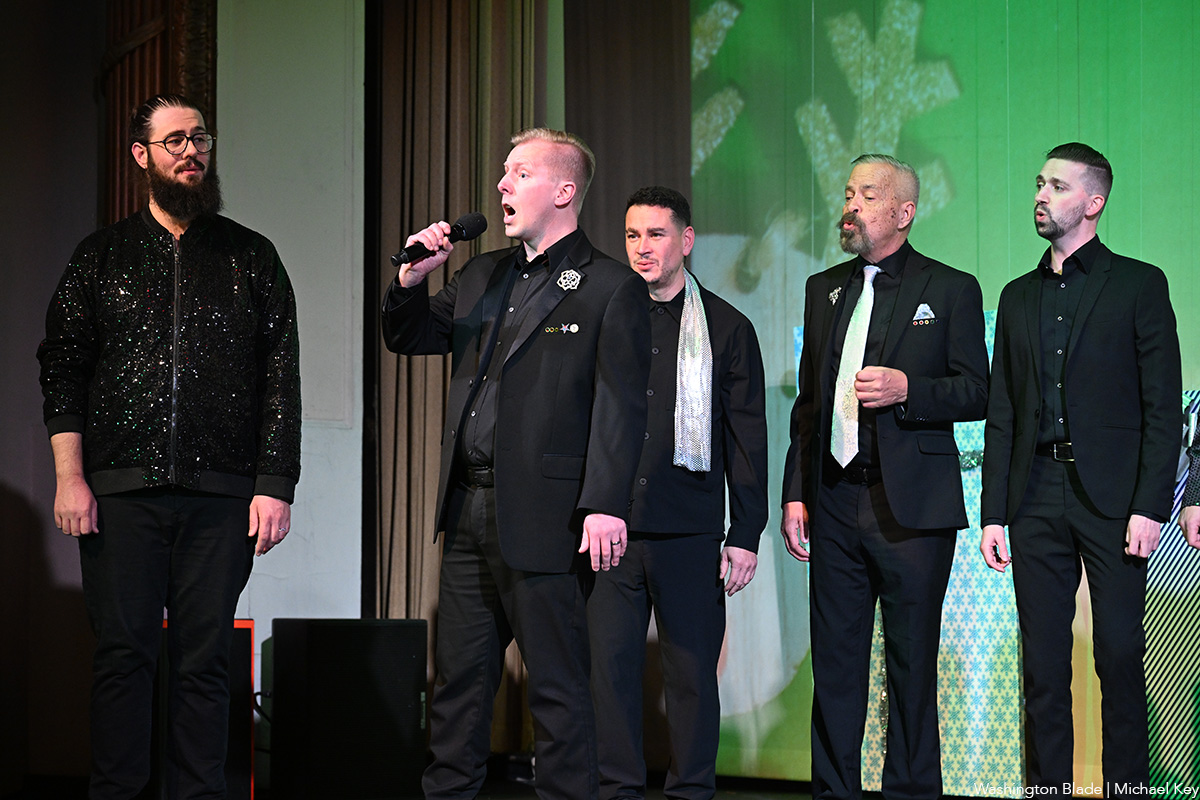
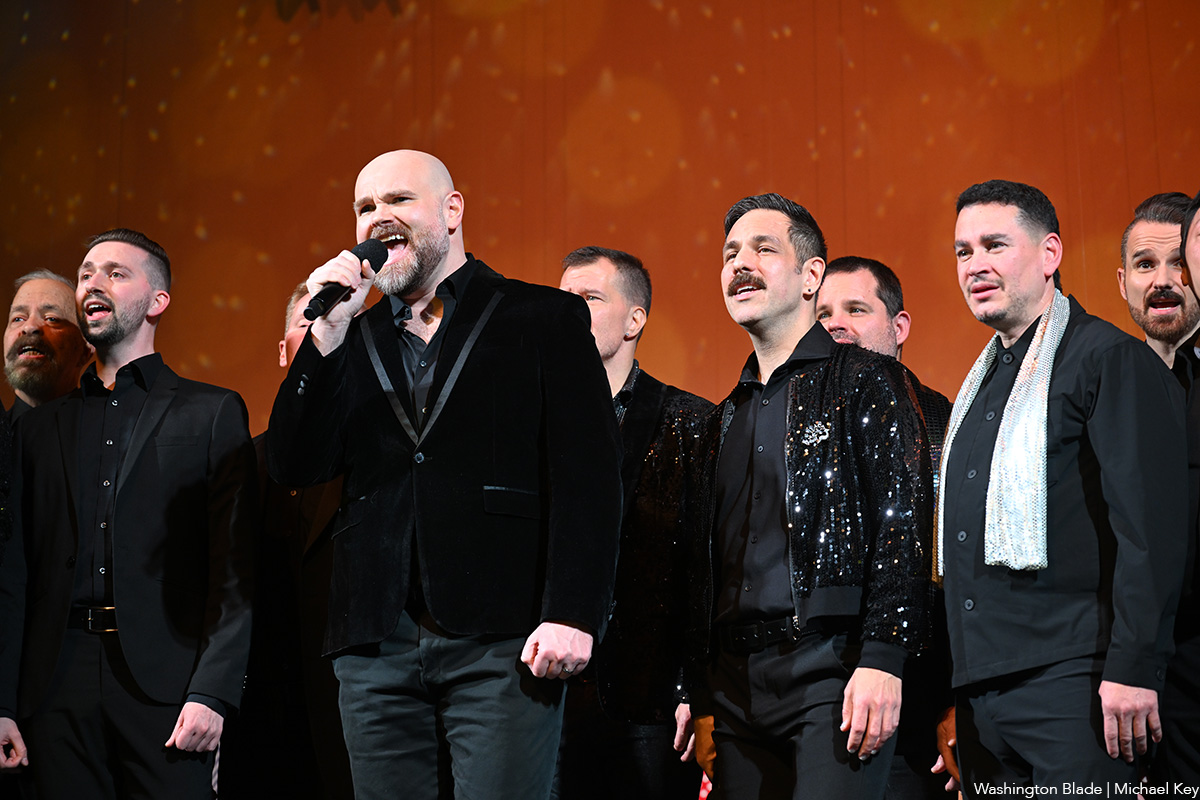
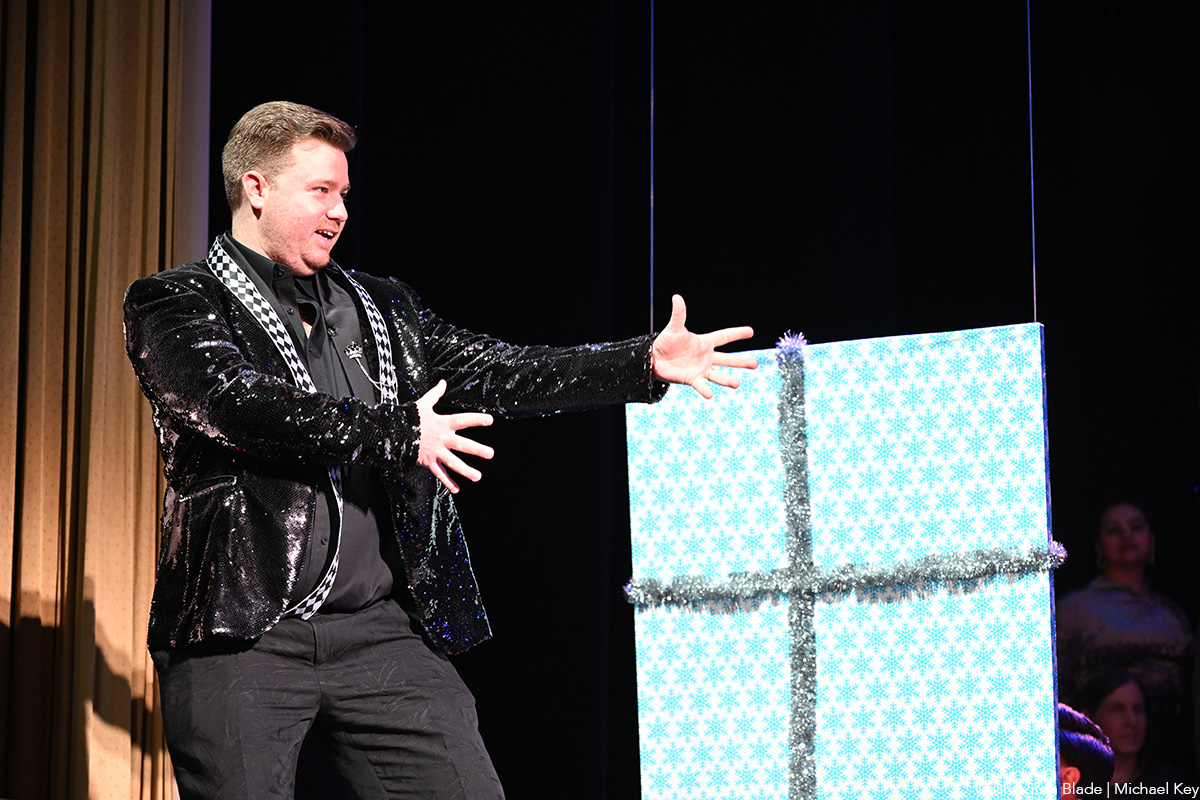

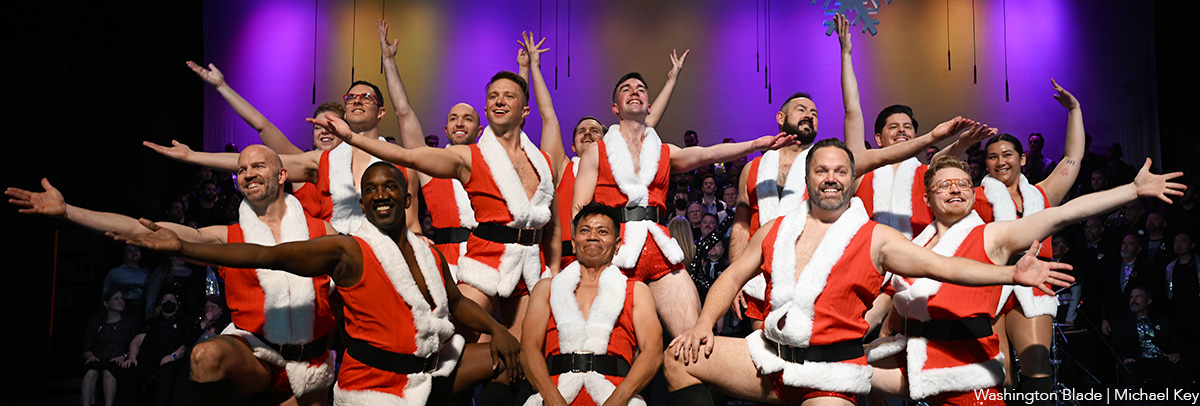
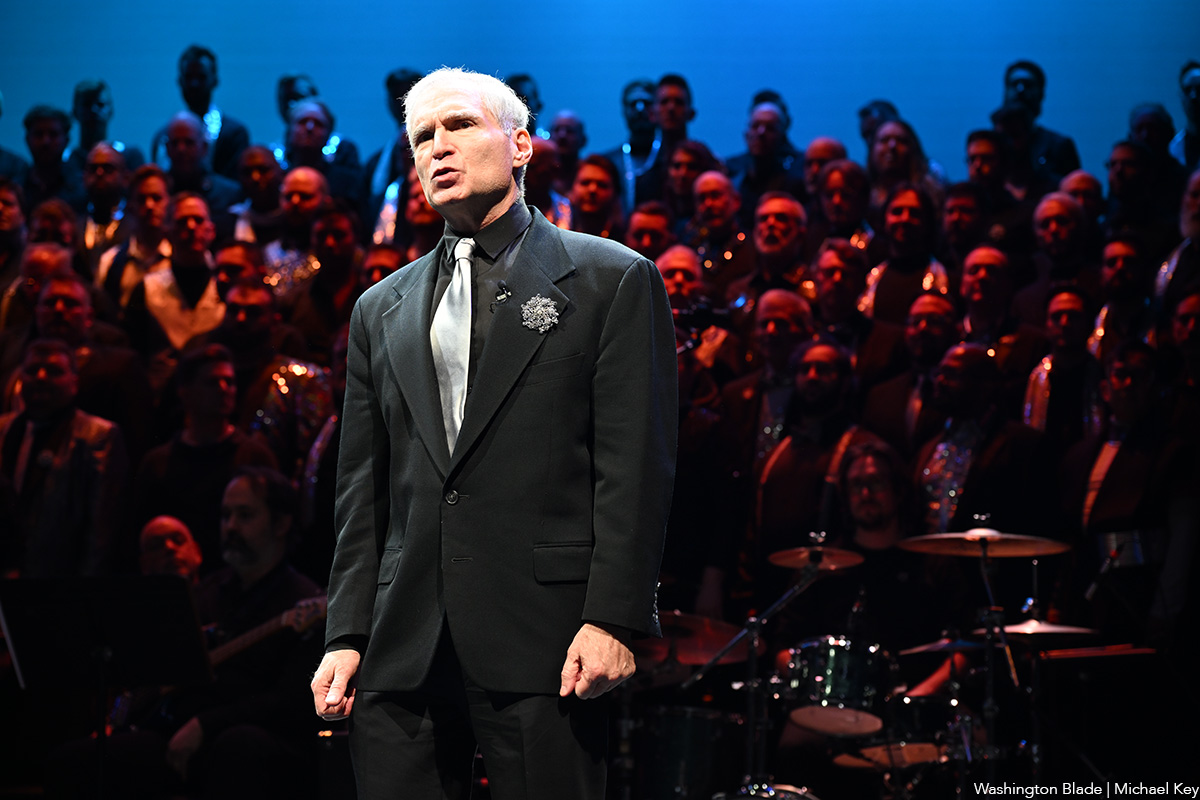


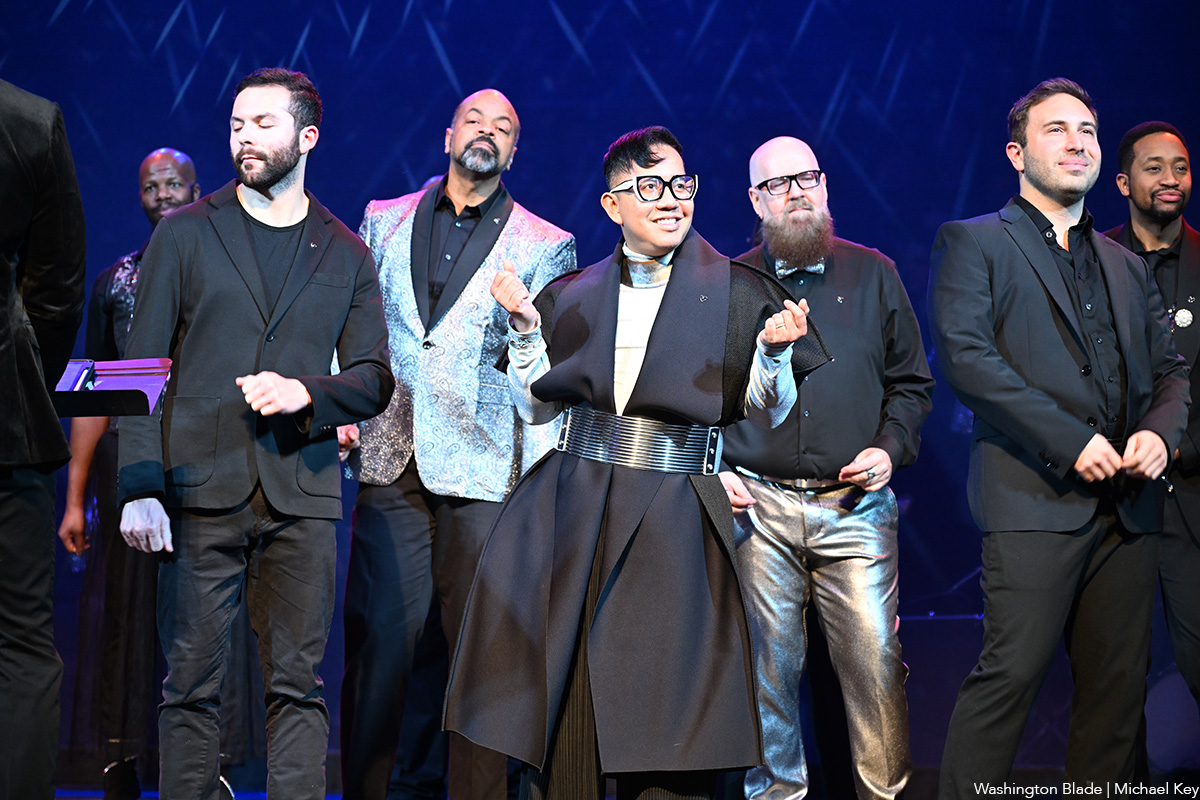





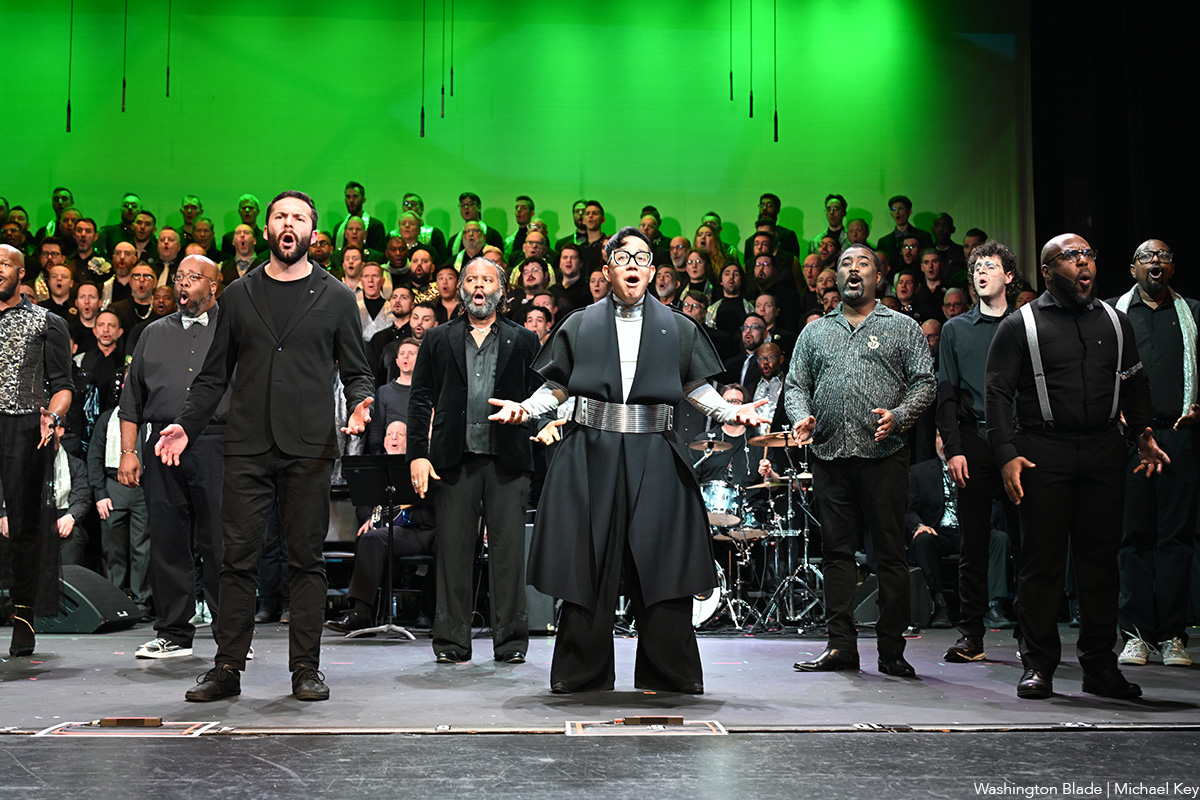
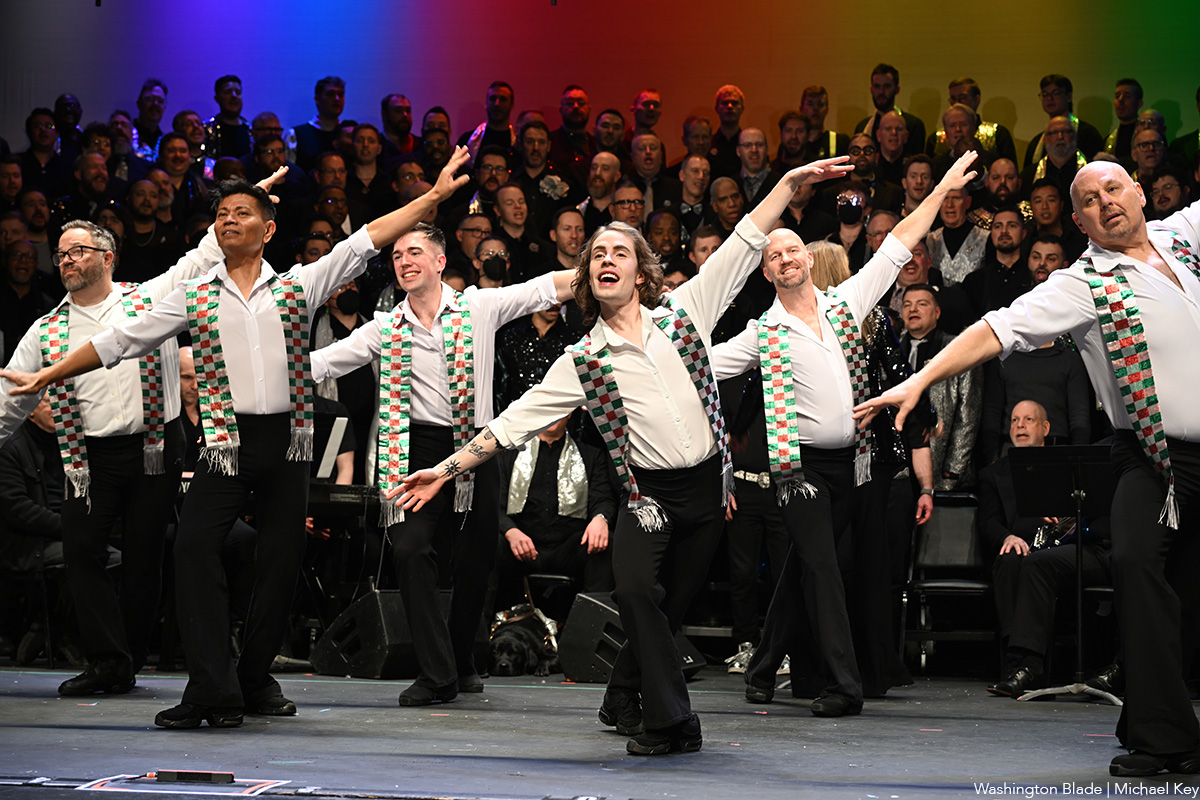

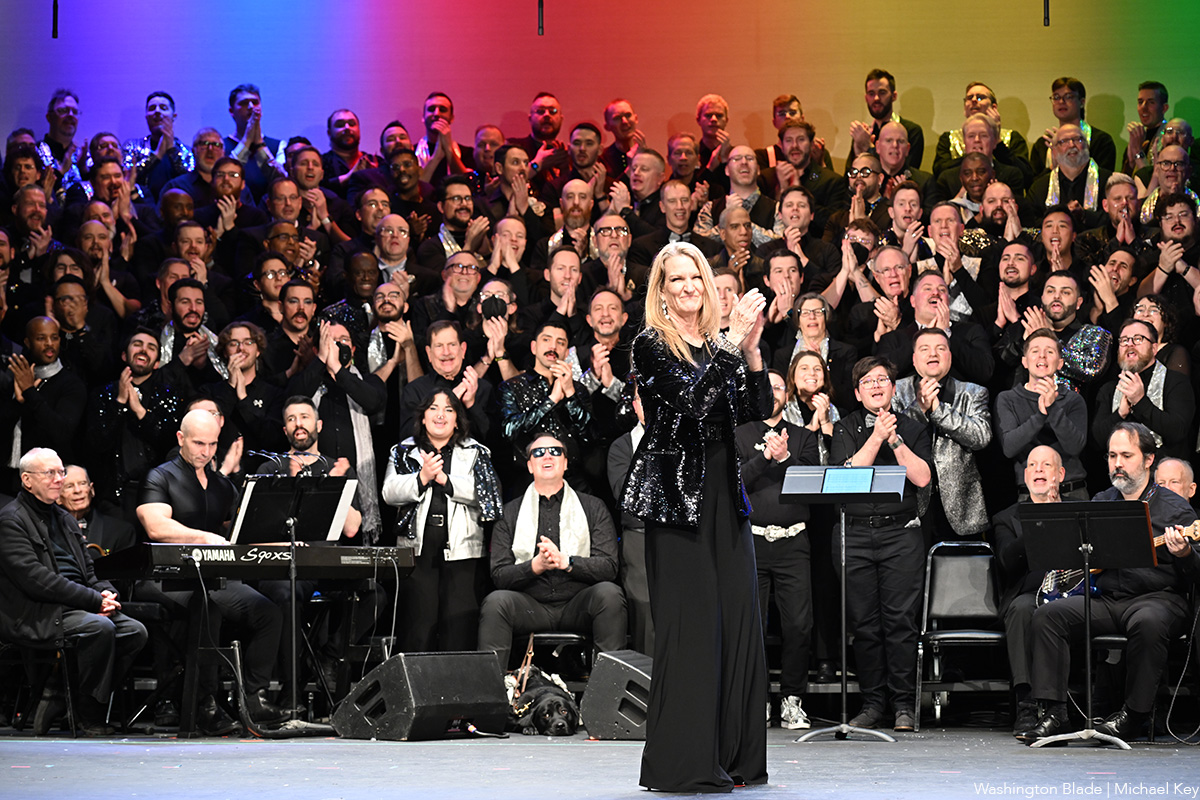
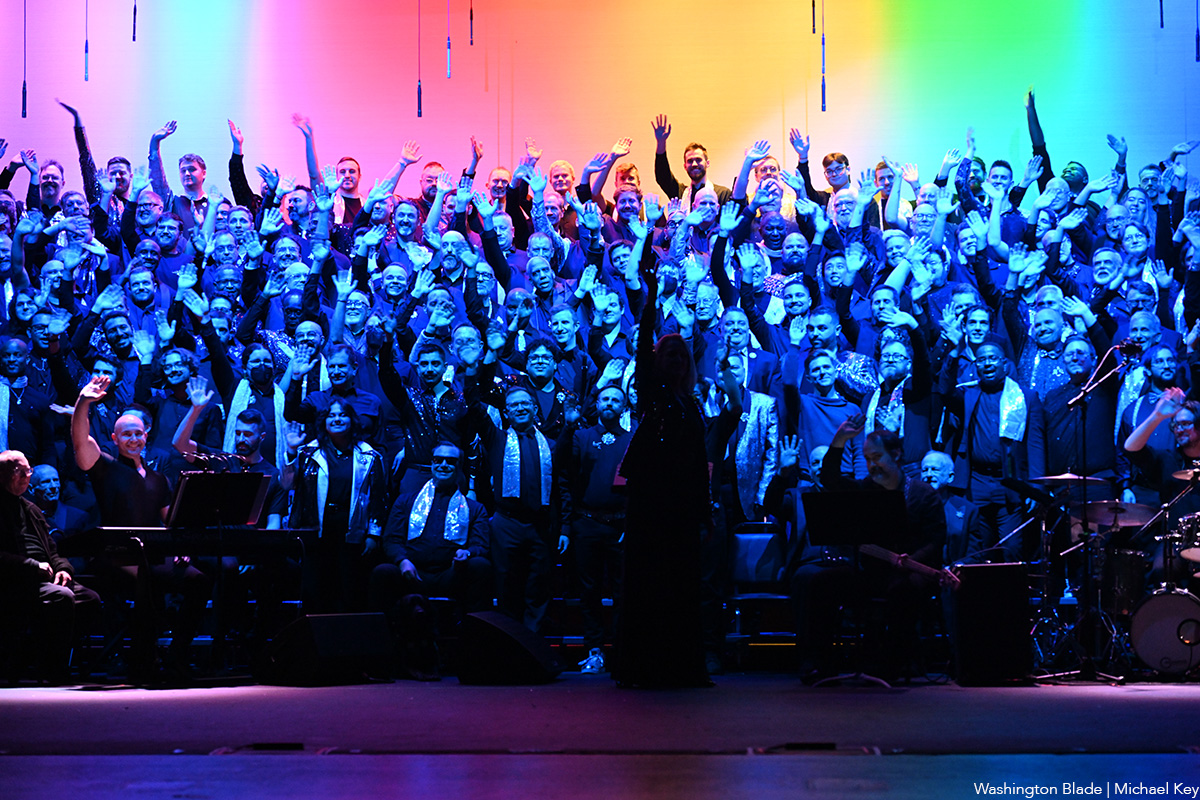

Santa will be very relieved.
You’ve taken most of the burden off him by making a list and checking it twice on his behalf. The gift-buying in your house is almost done – except for those few people who are just so darn hard to buy for. So what do you give to the person who has (almost) everything? You give them a good book, like maybe one of these.
Memoir and biography
The person who loves digging into a multi-level memoir will be happy unwrapping “Blessings and Disasters: A Story of Alabama” by Alexis Okeowo (Henry Holt). It’s a memoir about growing up Black in what was once practically ground zero for the Confederacy. It’s about inequality, it busts stereotypes, and yet it still oozes love of place. You can’t go wrong if you wrap it up with “Queen Mother: Black Nationalism, Reparations, and the Untold Story of Audley Moore” by Ashley D. Farmer (Pantheon). It’s a chunky book with a memoir with meaning and plenty of thought.
For the giftee on your list who loves to laugh, wrap up “In My Remaining Years” by Jean Grae (Flatiron Books). It’s part memoir, part comedy, a look back at the late-last-century, part how-did-you-get-to-middle-age-already? and all fun. Wrap it up with “Here We Go: Lessons for Living Fearlessly from Two Traveling Nanas” by Eleanor Hamby and Dr. Sandra Hazellip with Elisa Petrini (Viking). It’s about the adventures of two 80-something best friends who seize life by the horns – something your giftee should do, too.
If there’ll be someone at your holiday table who’s finally coming home this year, wrap up “How I Found Myself in the Midwest” by Steve Grove (Simon & Schuster). It’s the story of a Silicon Valley worker who gives up his job and moves with his family to Minnesota, which was once home to him. That was around the time the pandemic hit, George Floyd was murdered, and life in general had been thrown into chaos. How does someone reconcile what was with what is now? Pair it with “Homestand: Small Town Baseball and the Fight for the Soul of America” by Will Bardenwerper (Doubleday). It’s set in New York and but isn’t that small-town feel universal, no matter where it comes from?
Won’t the adventurer on your list be happy when they unwrap “I Live Underwater” by Max Gene Nohl (University of Wisconsin Press)? They will, when they realize that this book is by a former deep-sea diver, treasure hunter, and all-around daredevil who changed the way we look for things under water. Nohl died more than 60 years ago, but his never-before-published memoir is fresh and relevant and will be a fun read for the right person.
If celeb bios are your giftee’s thing, then look for “The Luckiest” by Kelly Cervantes (BenBella Books). It’s the Midwest-to-New-York-City story of an actress and her life, her marriage, and what she did when tragedy hit. Filled with grace, it’s a winner.
Your music lover won’t want to open any other gifts if you give “Only God Can Judge Me: The Many Lives of Tupac Shakur” by Jeff Pearlman (Mariner Books). It’s the story of the life, death, and everything in-between about this iconic performer, including the mythology that he left behind. Has it been three decades since Tupac died? It has, but your music lover never forgets. Wrap it up with “Point Blank (Quick Studies)” by Bob Dylan, text by Eddie Gorodetsky, Lucy Sante, and Jackie Hamilton (Simon & Schuster), a book of Dylan’s drawings and artwork. This is a very nice coffee-table size book that will be absolutely perfect for fans of the great singer and for folks who love art.
For the giftee who’s concerned with their fellow man, “The Lost and the Found: A True Story of Homelessness, Found Family and Second Chances” by Kevin Fagan (One Signal / Atria) may be the book to give. It’s a story of two “unhoused” people in San Francisco, one of the country’s wealthiest cities, and their struggles. There’s hope in this book, but also trouble and your giftee will love it.
For the person on your list who suffered loss this year, give “Pine Melody” by Stacey Meadows (Independently Published), a memoir of loss, grief, and healing while remembering the person gone.
LGBTQ fiction
For the mystery lover who wants something different, try “Crime Ink: Iconic,” edited by John Copenhaver and Salem West (Bywater Books), a collection of short stories inspired by “queer legends” and allies you know. Psychological thrillers, creepy crime, cozies, they’re here.
Novel lovers will want to curl up this winter with “Middle Spoon” by Alejandro Varela (Viking), a book about a man who appears to have it all, until his heart is broken and the fix for it is one he doesn’t quite understand and neither does anyone he loves.
LGBTQ studies – nonfiction
For the young man who’s struggling with issues of gender, “Before They Were Men” by Jacob Tobia (Harmony Books) might be a good gift this year. These essays on manhood in today’s world works to widen our conversations on the role politics and feminism play in understanding masculinity and how it’s time we open our minds.
If there’s someone on your gift list who had a tough growing-up (didn’t we all?), then wrap up “I’m Prancing as Fast as I Can” by Jon Kinnally (Permuted Press / Simon & Schuster). Kinnally was once an awkward kid but he grew up to be a writer for TV shows you’ll recognize. You can’t go wrong gifting a story like that. Better idea: wrap it up with “So Gay for You: Friendship, Found Family, & The Show That Started It All” by Leisha Hailey & Kate Moennig (St. Martin’s Press), a book about a little TV show that launched a BFF-ship.
Who doesn’t have a giftee who loves music? You sure do, so wrap up “The Secret Public: How Music Moved Queer Culture from the Margins to the Mainstream” by Jon Savage (Liveright). Nobody has to tell your giftee that queer folk left their mark on music, but they’ll love reading the stories in this book and knowing what they didn’t know.
The Blade may receive commissions from qualifying purchases made via this post.
Theater
Studio’s ‘Mother Play’ draws from lesbian playwright’s past
A poignant memory piece laced with sadness and wry laughs
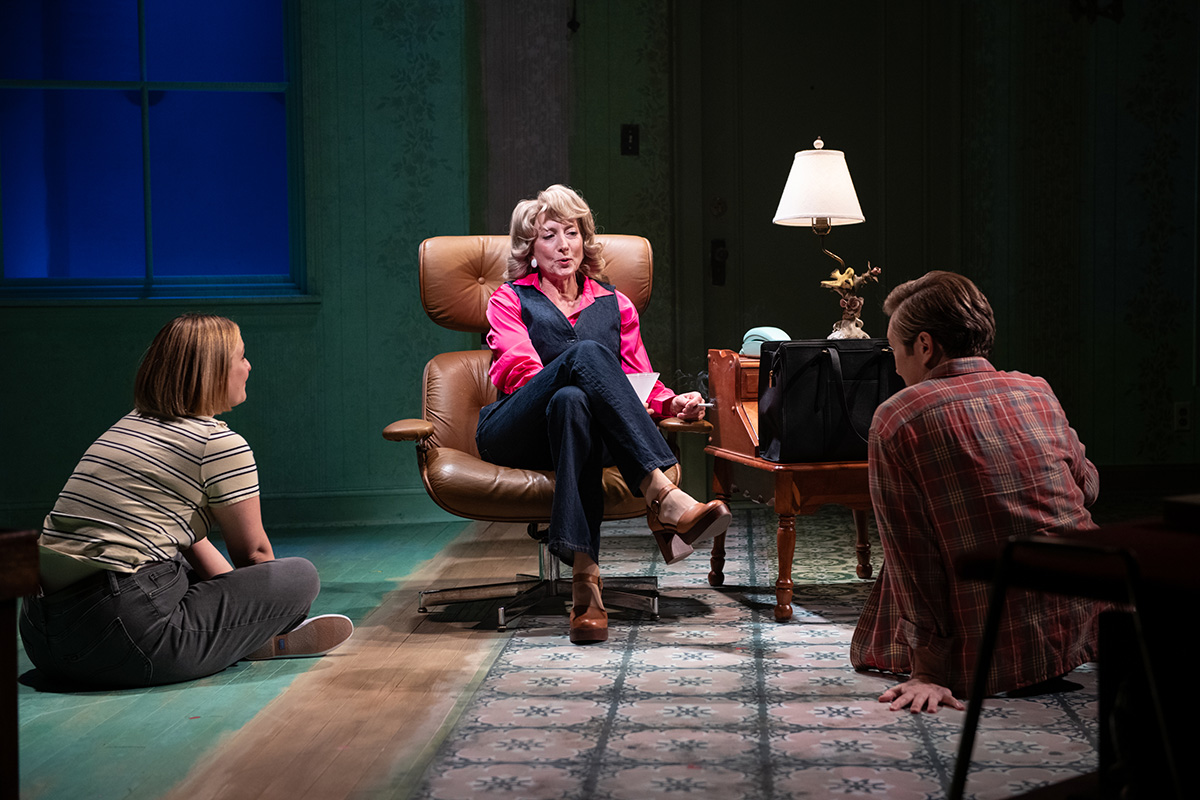
‘The Mother Play’
Through Jan. 4
Studio Theatre
1501 14th St., N.W.
$42 – $112
Studiotheatre.org
“The Mother Play” isn’t the first work by Pulitzer Prize-winning lesbian playwright Paula Vogel that draws from her past. It’s just the most recent.
Currently enjoying an extended run at Studio Theatre, “The Mother Play,” (also known as “The Mother Play: A Play in Five Evictions,” or more simply, “Mother Play”) is a 90-minute powerful and poignant memory piece laced with sadness and wry laughs.
The mother in question is Phyllis Herman (played exquisitely by Kate Eastwood Norris), a divorced government secretary bringing up two children under difficult circumstances. When we meet them it’s 1964 and the family is living in a depressing subterranean apartment adjacent to the building’s trash room.
Phyllis isn’t exactly cut out for single motherhood; an alcoholic chain-smoker with two gay offspring, Carl and Martha, both in their early teens, she seems beyond her depth.
In spite (or because of) the challenges, things are never dull in the Herman home. Phyllis is warring with landlords, drinking, or involved in some other domestic intrigue. At the same time, Carl is glued to books by authors like Jane Austen, and queer novelist Lytton Strachey, while Martha is charged with topping off mother’s drinks, not a mean feat.
Despite having an emotionally and physically withholding parent, adolescent Martha is finding her way. Fortunately, she has nurturing older brother Carl (the excellent Stanley Bahorek) who introduces her to queer classics like “The Well of Loneliness” by Radclyffe Hall, and encourages Martha to pursue lofty learning goals.
Zoe Mann’s Martha is just how you might imagine the young Vogel – bright, searching, and a tad awkward.
As the play moves through the decades, Martha becomes an increasingly confident young lesbian before sliding comfortably into early middle age. Over time, her attitude toward her mother becomes more sympathetic. It’s a convincing and pleasing performance.
Phyllis is big on appearances, mainly her own. She has good taste and a sharp eye for thrift store and Goodwill finds including Chanel or a Von Furstenberg wrap dress (which looks smashing on Eastwood Norris, by the way), crowned with the blonde wig of the moment.
Time and place figure heavily into Vogel’s play. The setting is specific: “A series of apartments in Prince George’s and Montgomery County from 1964 to the 21st century, from subbasement custodial units that would now be Section 8 housing to 3-bedroom units.”
Krit Robinson’s cunning set allows for quick costume and prop changes as decades seamlessly move from one to the next. And if by magic, projection designer Shawn Boyle periodically covers the walls with scurrying roaches, a persistent problem for these renters.
Margot Bordelon directs with sensitivity and nuance. Her take on Vogel’s tragicomedy hits all the marks.
Near the play’s end, there’s a scene sometimes referred to as “The Phyllis Ballet.” Here, mother sits onstage silently in front of her dressing table mirror. She is removed of artifice and oozes a mixture of vulnerability but not without some strength. It’s longish for a wordless scene, but Bordelon has paced it perfectly.
When Martha arranges a night of family fun with mom and now out and proud brother at Lost and Found (the legendary D.C. gay disco), the plan backfires spectacularly. Not long after, Phyllis’ desire for outside approval resurfaces tenfold, evidenced by extreme discomfort when Carl, her favorite child, becomes visibly ill with HIV/AIDS symptoms.
Other semi-autobiographical plays from the DMV native’s oeuvre include “The Baltimore Waltz,” a darkly funny, yet moving piece written in memory of her brother (Carl Vogel), who died of AIDS in 1988. The playwright additionally wrote “How I Learned to Drive,” an acclaimed play heavily inspired by her own experiences with sexual abuse as a teenager.
“The Mother Play” made its debut on Broadway in 2024, featuring Jessica Lange in the eponymous role, earning her a Tony Award nomination.
Like other real-life matriarch inspired characters (Mary Tyrone, Amanda Wingfield, Violet Weston to name a few) Phyllis Herman seems poised to join that pantheon of complicated, women.



